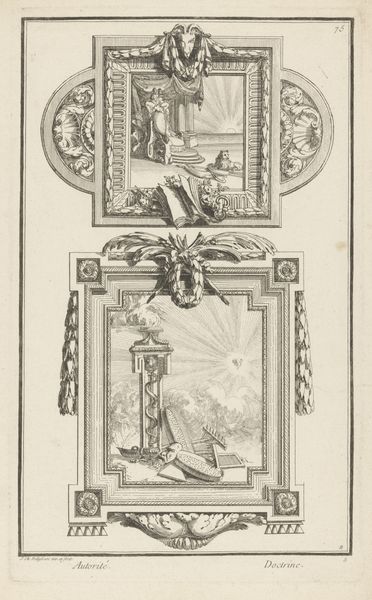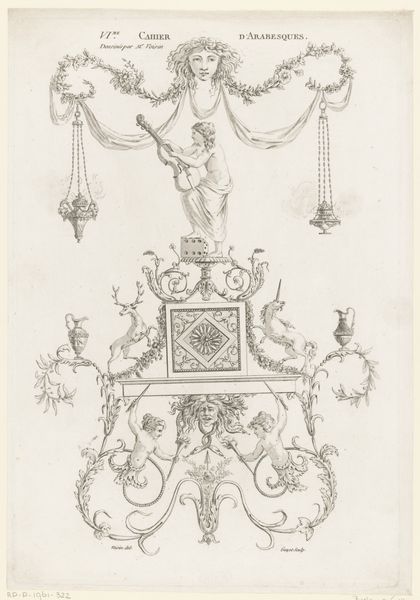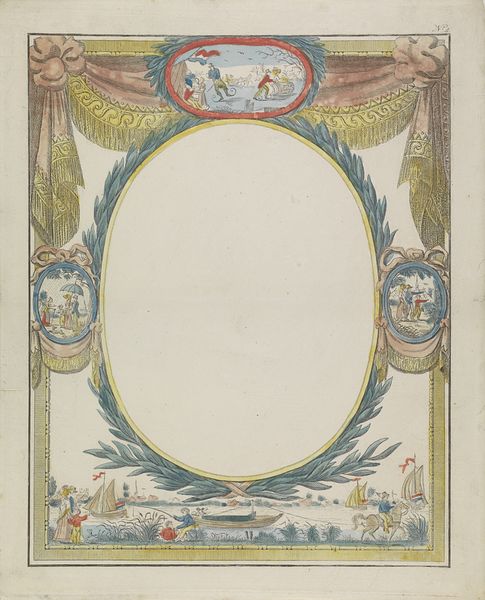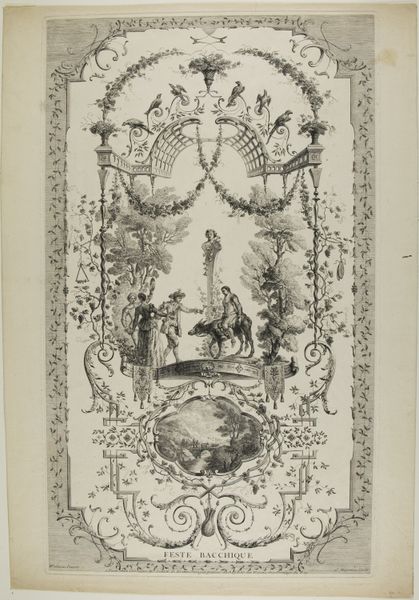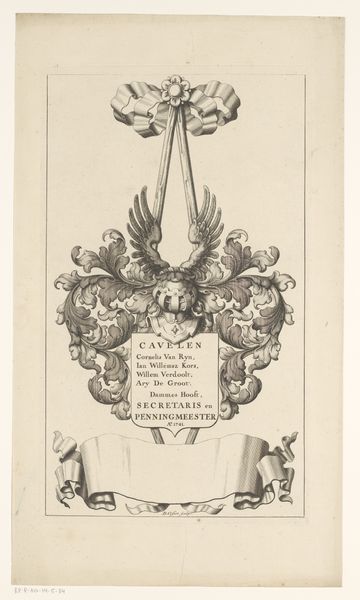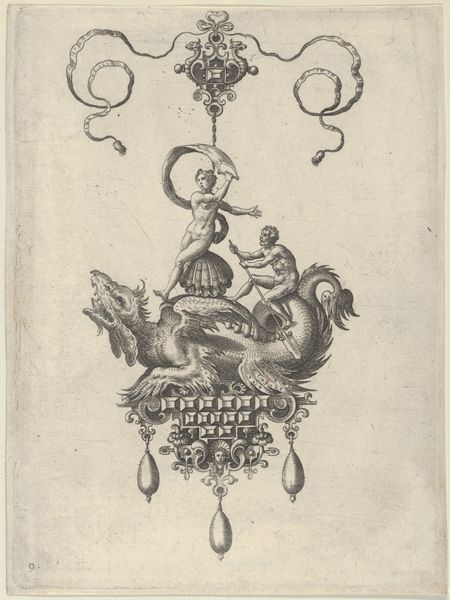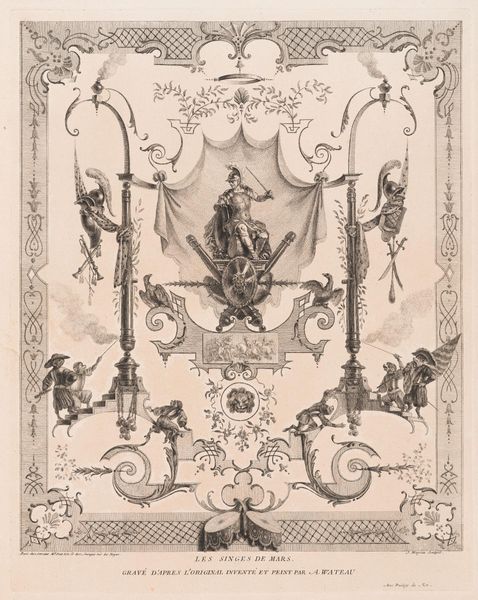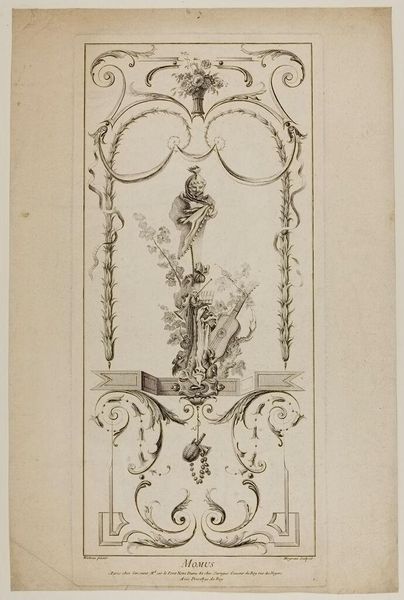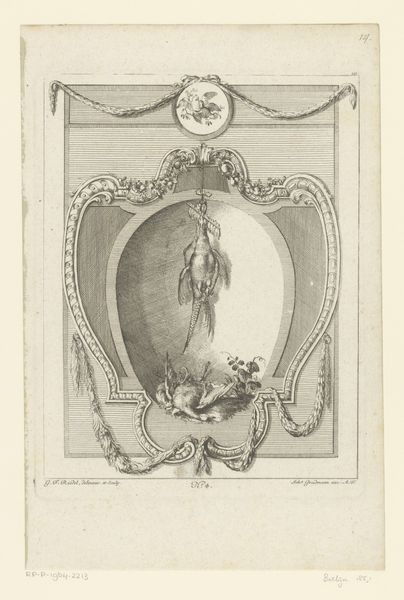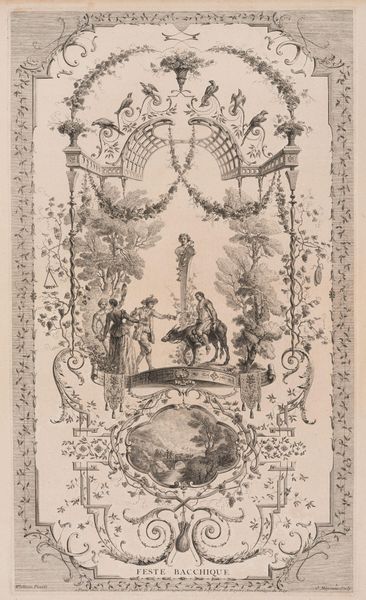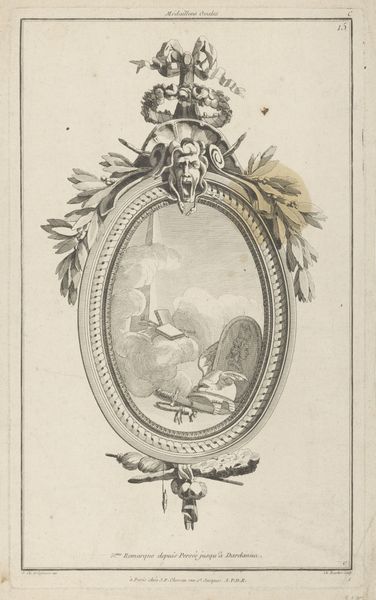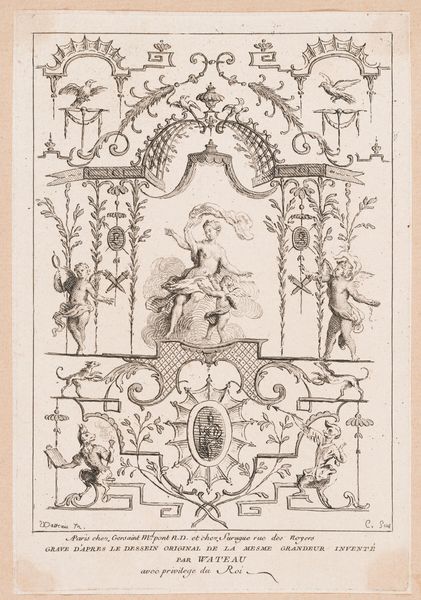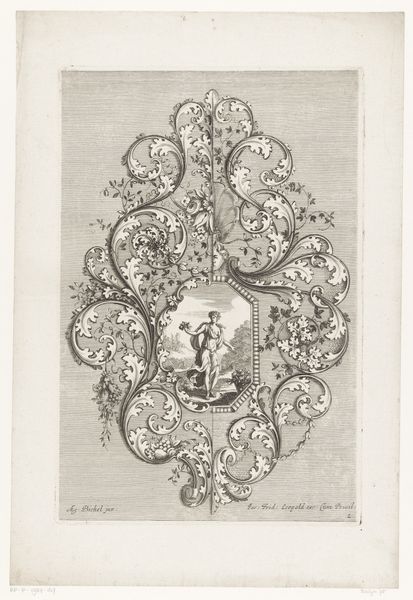
Dimensions: height 414 mm, width 335 mm, height 378 mm, width 295 mm
Copyright: Rijks Museum: Open Domain
Editor: This is "Wensbrief met Vader Tijd," or "Greeting Card with Father Time," an undated drawing from somewhere between 1792 and 1847, at the Rijksmuseum, by Hendrik Moolenyzer. It is rendered in watercolor on paper, and at first glance, it appears to be a somewhat ornate, if a little morbid, decorative frame. What do you see in this piece? Curator: Initially, observe the bifurcated nature of the composition: two neoclassical pillars flanking a central void, ostensibly for textual inscription. The linear precision and symmetry here evokes classical architectural principles. Note, too, the muted, almost washed-out color palette. It denies vibrant expression, encouraging a reading centered more on form than affective response. Editor: Yes, the lack of bright color contributes to its serious tone. And that figure at the top… Father Time? Curator: Precisely. Father Time, winged and wielding a scythe, occupies the upper register, positioned amidst swirling clouds. The figure seems to both crown and constrain the pictorial space. How does his form relate to the implied message? Consider also, how the surrounding visual elements – the columns, drapery, putti – inform, enhance, or potentially contradict the allegorical presentation of mortality. Editor: I guess the cherubs and laurel wreaths seem celebratory but balanced with symbols of time. And they seem very deliberately positioned in a carefully crafted balance of life and death? Curator: Indeed. Furthermore, consider the formal relationship between the various elements. For example, observe the serpentine curve of the gold ribbon at the base mirroring the curvature of the cloudscape above. This careful mirroring produces a visually cohesive framework and leads the eye around the piece. A semiotic analysis might unveil further layers of meaning inherent within the visual structure. Editor: It's interesting to notice how the formal elements, like color and shape, carry so much meaning and shape the themes. Thanks, this was eye opening! Curator: And, conversely, consider how such "meaning" reshapes our viewing of its most immediate materiality.
Comments
No comments
Be the first to comment and join the conversation on the ultimate creative platform.
